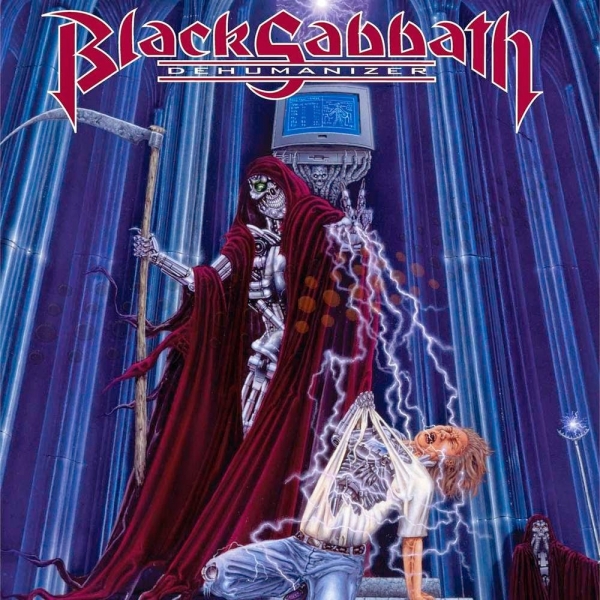
Appice would depart shortly after, and Butler would leave in 1994 after Dehumanizer’s immediate follow-up, Cross Purposes, was released. Sabbath were invited to open for original vocalist Ozzy Osbourne’s “final” tour in 1992 and Dio, understandably offended, quit the band upon discovering this, with Priest’s Rob Halford filling in. It was a favorite album when I was fifteen, 3 and is even more so at 45.

Each and every track on here teems with a tense energy, a palpable and tangible aura that accentuates the music on hand. None of the album’s ten tracks sound dated or tired. Every now and then, I’ll go on a binge and explore a band’s discography almost from beginning to end, 2 and Dehumanizer, out of all of Sabbath’s discography, holds up remarkably well thirty years later.

Much like many classics in the history of music, sometimes unbearable tension can produce some amazing works of art.īut what gets me is just how fresh this all sounds now. On the other side of the coin, “TV Crimes” and “I,” both unapologetic riff-fests, displayed a near-thrashy, ugly, and bestial side that hadn’t been seen much before. Elsewhere, “After All (The Dead)” and “Too Late” showcased Sabbath at their slowest (and heaviest), with Dio’s voice soaring above the clouds effortlessly. With Dio snarling “Program the brain, not the heartbeat,” you can tell that this is a radically different animal than either 1980’s Heaven and Hell, its immediate follow-up, Mob Rules, or even anything Dio was putting out at that point. How’s the music? Upon the first minute of opener “Computer God,” with Appice’s thunderous drumming and Butler and Iommi in perfect lockstep with each other, you can feel a meaner, heftier Sabbath than ever before. Calling the production process “challenging” would be the ultimate in understatements.īut enough with the crazy backstory.

And old wounds resurfaced during the recording between the two Americans and two Brits, with prior vocalist Tony Martin on stand-by in case things went south with Dio. Prior to Appice’s return to the band, the late Cozy Powell was set to record drums for what would become Dehumanizer, but due to what could charitably be called a “freak accident,” 1 he was fired and replaced with Appice. Things would seem on the up-and-up when co-founding bassist Geezer Butler would rejoin in 1991, alongside Mob Rules drummer Vinny Appice and the late, great Ronnie James Dio… or would they? Join us as we induct 1992’s Dehumanizer, Sabbath’s sixteenth studio album, into the Hallowed Halls of the Olde, and analyze a bizarre tale featuring unresolved tension, hurt feelings, and even a dead horse, which all resulted in one hell of an album, and arguably Sabbath’s heaviest.Īnd man, did things turn sour before the first note was even recorded. By the time the 90s began, sole founding member Tony Iommi had already dealt with various line-up shuffles, attempts at a solo career that were renamed as Sabbath albums, and bad musical decisions left and right. Judas Priest and Iron Maiden, both riding the winds of success of the 1980s, were struggling to stay afloat due to dips in quality of music, the change of musical tastes in people, the looming flannel-cloaked spectre of grunge, and both their vocalists leaving to pursue solo careers. To put things ever so gently, the 1990s were not a good time for heavy metal, especially not the classic triumvirate of British heavy metal.


 0 kommentar(er)
0 kommentar(er)
